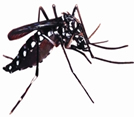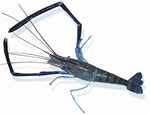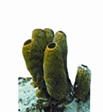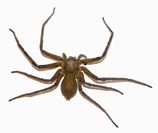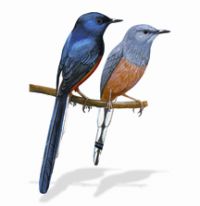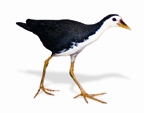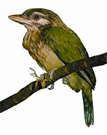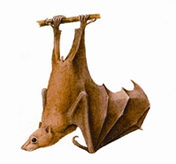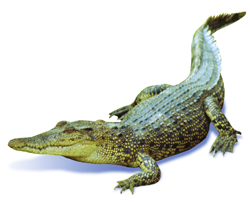Fauna
Fauna Bangladesh is situated within the subtropical belt and has a wide variety of ecological conditions. In addition to a long sea coast, numerous rivers and their tributaries, lakes, haors, baors, ponds and other forms of wetlands, there are lowland evergreen forests of tropical nature, semi-evergreen forest, hill forests, moist deciduous forests, swamps, and flat lands with tall grasses. Because of expansion of agriculture and industry many original vegetation of most areas have lost their original characteristics and ecological features, which affected adversely both the fauna and flora of the country.
Our knowledge on animals of this subcontinent started accumulating from the accounts of early explorers and naturalists. Even some of the Mughal emperors were animal lovers, and animals occupied important place in their art and writings. Modern science actually started during the British period. Natural historians, such as Stuart Baker, Gunther, Viellot, Blyth, TC Jerdon, Gmelin, Hooker, Blanford, Heinrich, Hamilton-Buchanan, F Day, and others greatly enriched the knowledge of fauna and flora of this subcontinent. 'The Fauna of British India' series, in more than 50 volumes, amply testifies to the contributions of the British naturalists. The accounts of the early workers bear clear evidence to the fact that there was once a wonderful community of fauna within the territory of Bangladesh. Some of the animals like rhinoceros, buffalo, antelope, serow, peafowl etc went extinct, and other species have become greatly reduced in number; many are vulnerable, endangered or critically endangered.
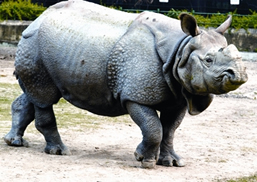 |
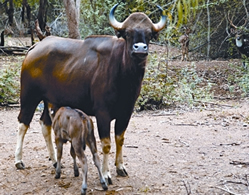 |
 |
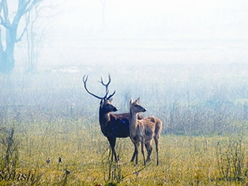 |
The country possesses a wide range of invertebrates and vertebrates in its aquatic and terrestrial habitats. The invertebrate fauna of the country has not yet been fully recorded. However, there has been a fairly good stocktaking of the vertebrate fauna.
Invertebrate fauna Of the lower invertebrates, some parasitic species of protozoans, freshwater and marine sponges and corals, and many parasitic nematodes and helminths have been described. Among the homopteran insects only about 30 aphid species under 20 genera have so far been listed in the country. This group is of major economic importance both for the direct damage they cause to crops and for the viral diseases they transmit. Wind currents disperse winged adults. There are about 20,000 species of bees under 19 families worldwide. In Bangladesh 18 species have so far been reported, of which 4 are honeybees.
In terms of number of species, Coleoptera (beetles) is the largest order in the animal and plant kingdoms. About 35 species under 8 genera of scarab dung beetle fauna have so far been reported from Bangladesh, mostly of genus Onthophagous. About 30 species of leaf-eating scarabeids have also been recorded from Bangladesh. About 80 species of beneficial ladybirds, and about 13 species of phytophagous ladybirds have so far been reported. There are about 2000 species of firefly worldwide belonging to 100 genera and seven subfamilies; about 280 species occur in Asia. In Bangladesh about 20 species have been recorded.
Worldwide there are over 85,000 described species of dipterans (flies). In Bangladesh the common indoor fly species are the house fly, the lesser house fly, the biting house fly or stable fly, the blue bottles or blow flies, the green bottles, and the flesh flies. Outdoor flies include black flies, deer flies, horse flies, hover flies, daddy long legs or crane flies and many muscoids. The sand flies are common in both indoors and outdoors. So far 5 species of fruit flies have been recognized. Over 1600 species of mosquitoes are known worldwide; 113 species have so far been recorded from Bangladesh. Among the spiders more than 400 species have been recorded in 134 genera, and 22 families.
Many commercially important fresh and marine-water crabs, shrimps and lobsters are abundantly found in Bangladesh. Four species of freshwater and 11 species of marine crabs have been recorded. The most commercially exploited species of the coastal area is Scylla serrata (mud crab). There are at least two species of king crabs in the coastal zone. There are about 10 species of freshwater shrimps/prawns and 19 species of marine shrimps in Bangladesh. Six species of lobsters are found to occur in the Bay of Bengal: Panulirus polyphagus and Thenus orientalis are the two most commercially important species. Daphnia, Cypris and several copepods are important zooplankters in the freshwaters. Of the marine zooplankters about 20 species of copepods are predominant. Two species of starfishes have been reported from Bangladesh. Many members of sand dollars, sea cucumbers, and sea-urchins are found in good numbers in the coastal belt of Bangladesh.
Vertebrate fauna Today some 32,000 species of fishes, 6,925 amphibians, 9,547 reptiles, 9,920 birds and 5,676 mammals are known worldwide. Bangladesh has about 1600 species of vertebrate fauna.
Threatened vertebrate fauna Although Bangladesh has a rich biodiversity, there was no stocktaking and monitoring of this resource. The country has lost more than a dozen vertebrate fauna during the last century. Of them the following may be mentioned: 1. One-horned Rhinoceros, Rhinoceros unicornis; 2. Javan Rhinoceros, Rhinoceros sondaicus; 3. Asiatic Two-horned Rhinoceros, Didermoceros sumatrensis; 4. Gaur, Bos gaurus; 5. Banteng, Bos banteng; 6. Wild Buffalo, Bubalus bubalis; 7. Nilgai, Boselaphus tragocamelus; 8. Swamp Deer, Cervus duvauceli; 9. Wolf, Canis lupus; 10. Pink-headed Duck, Rhodonessa caryophyllacea; 11. Common Peafowl, Pavo cristatus; and 12. Marsh Crocodile, Crocodylus palustris. The IUCN (The World Conservation Union)-Bangladesh (2000) reviewed the status of the vertebrate fauna. It is reported that 54 inland fishes, 8 amphibians, 58 inland reptiles, 41 resident birds, and 40 inland mammals have come under different categories of threats. A large number (n=323) remained as data deficient. The local status of migratory birds and other marine vertebrate fauna could not be evaluated due to paucity of data. [Md. Anwarul Islam]
Zoology education and research science of zoology embraces all conceivable modes of study, not only of individual animals but also of entire fauna, and of the relations of animals with one another, with plants, and with the nonliving environment. Because of its vast scope, zoology is usually divided into several branches of which the principal ones are: taxonomy, morphology, physiology, functional anatomy, embryology, paleontology, genetics, evolution, ecology, zoogeography, and economic zoology. With the advancement of knowledge, specialized branches such as protozoology, entomology, parasitology, fisheries, wildlife, conservation biology etc have been emerged.
The study of Zoology at higher level was first initiated in this part of Bengal when the Department of Biology was instituted in 1939 under the Faculty of Agriculture, University of Dhaka, where BSc (Pass) course in Zoology was introduced in the session 1947-48. Panchanon Maheswari was appointed as the Head of the Department of Biology. With the advancement of zoological studies in its various fields, a separate Department of Zoology emerged as an independent unit in 1954 at Dhaka University. Habibullah Khan Yosufzai became the first Head of the Department. BSc (Honours) courses in Zoology were introduced for the first time in the Department of Biology in the 1952-53 session. Students who were earlier admitted to the BSc (Pass) course were allowed to get transferred to the Honours course and they appeared for the BSc (Honours) Final Examination in 1954.
Since its inception, the Department of Zoology has been making invaluable contributions to zoological studies through teaching and research. After the war of liberation, the Department of Zoology was brought under the Faculty of Biological Sciences in 1974, before that it was under the Faculty of Sciences. Department of Zoology was first located in the present Soil Science Department building and later on shifted to the present premises in 1955.
The teachers, and the students of MSc final year (thesis group), MPhil and PhD in the fields of Entomology, Fisheries, Parasitology, and Wildlife Biology, conduct research activities in the department. Research is carried out either exclusively in the department or jointly with other departments of Dhaka University or other universities, research institutes or research organisations in the country. Several collaborative research programmes are currently being implemented with Bergen University, Norway, and the University of Pau, France. Research interests in different fields are: (a) Entomology- vector biology and vector control, sand fly biology, mosquito control with special reference to the use of larvicides, and repellants against mosquitoes of Dhaka city; insect taxonomy, morphology and embryology; biology of the dragonfly, dung-beetles, pulse beetles; anatomy and morphogenesis of insects; insect ecology; economic and medical entomology; taxonomy and ecology of spiders, and mite; (b) Fisheries- Aquaculture, fish pathology and parasitology; fisheries systematics, freshwater ecology, fish population dynamics, limnology, pond and lake production; fisheries resources management; marketing, processing, and quality control; fish biology; physiology and endocrinology; shrimp biology; and flood plain fisheries. (c) Parasitology- taxonomy, ecology, biology, pathology, and control of various parasites; (d) Wildlife Biology- taxonomy, breeding biology; reproductive physiology, food and feeding habits, eco-ethology, and management of amphibians, reptiles, birds, and mammals.
In the University of Rajshahi the Department of Zoology was instituted as an independent department in 1972, and Mustafizur Rahman was appointed as the Head of the Department. Prior to this, Zoology was taught in the University as a subsidiary subject under the Department of Botany. BSc (Honours) in Zoology was offered for the first time in 1969.
The Department offers academic programmes and research facilities leading to BSc (Honours), MSc, MPhil and PhD degrees. Specialized courses namely, Cell Biology, Sericulture, Ecology, Entomology, Fisheries, and Genetics and Animal Breeding are offered at MSc level. The department has 15 acres of land and several ponds for field studies. The research interests of the department include breeding biology, ecology, physiology, and natural enemies of the mulberry and non-mulberry silkworms; biology, ecology, and control of crop, lemon, and stored grain pests; genetics of Drosophila and genetic control of the mosquito and house fly; food, feeding habits, production estimate, augmentation, survival, and growth of fish in ponds; taxonomy and biology of prawns, etc. The teachers and students of the department have formed the 'Rajshahi University Zoological Society' to look after the academic and extra-curricular activities of the Department. The society publishes a research journal titled University Journal of Zoology, and a magazine, Probal annually.
The University of Rajshahi established the Institute of Biological Sciences (IBSc), an advanced centre for research and studies in 1987. The main objectives of the Institute are to develop systems and processes for utilization in agriculture, health and medicine, industry and energy; and to develop research activities in modern biology including zoology in co-operation with other departments of the University. IBSc offers courses for MPhil and PhD degrees.
The Department of Zoology, University of Chittagong was established in 1973. Shafique Haider Chowdhury was appointed as the Head of the Department. The Department offers programmes of study and research leading to BSc (Honours), MSc, MPhil, and PhD degrees. Specialized courses, which are offered to MSc students, include Limnology, Fisheries Biology, Entomology, Wildlife Biology and Parasitology. Research activities are centred around the following fields: biological control of insect pests; toxic effects of agrochemicals and industrial effluents; limnology of the river Halda; benthic organisms; physico-chemical and biological aspects of the Kaptai reservoir; taxonomic study of ichthyofauna; parasitic diseases of commercially important fishes; breeding biology of Bostami Turtle; ectoparasites of small mammals and birds; taxonomy and biology of spiders, dragonflies, mantis, shrimps, insect pests, coccoid and hymenopteran parasitoids, and population study of important caridean prawns of the Karnafuli river estuary.
The University of Chittagong established the Department of Marine Biology in October 1971, appointing Abdul Latif Bhuiyan as the Head of the Department. The first academic session of a two-year post-graduate course in Marine Biology started in 1972-73. The three-year BSc (Honours) course was introduced during 1981-82 session. In August 1983 the University renamed the Department of Marine Biology as the Institute of Marine Sciences. The Institute provides teaching and research facilities leading to BSc (Honours), MSc, MPhil, and PhD in such fields as fisheries biology, microbiology, planktonology, ecology, mangrove study, hydrology, exploitation and exploration of marine resources, sea water pollution, etc.
The Institute of Life Sciences at Jahangirnagar University, Savar, Dhaka, was established in 1986. Initially two divisions - Botany and Zoology were introduced. Subsequently Pharmacy Division was added in 1987. The Zoology Division was headed by Md Anwarul Islam. The three branches from its inception started offering courses for BSc (Honours) degrees in Zoology and Botany, and BPharm (Honours) degree in Pharmacy. In Zoology, specialized courses are offered to the MSc students in the fields of Entomology, Limnology and Fisheries, and Wildlife and Conservation Biology. The department also offers MPhil and PhD degrees. The institute has been transformed into the Faculty of Biological Sciences in the beginning of 2001.
At the Bangladesh Agricultural University, Mymensingh, the study of zoology spreads across several departments. These are the Departments of Zoology, Entomology, Fisheries Biology and Limnology, Aquaculture and Management, and Fisheries Technology. The latter three comprise the Faculty of Fisheries. In the Faculties of Veterinary Sciences, and Animal Husbandry zoology related subjects including parasitology are also taught. Department of Zoology offers basic courses in zoology at the undergraduate level. The Department of Entomology offers courses to graduate and post-graduate students. Besides general entomology, research work is carried out on the taxonomy, biology, control, and ecology of various crop pests.
In the faculty of fisheries courses related to fisheries and aquaculture are offered including biology of fishes, water ecology, aquaculture management, and fish processing and technology. Research activities include fish feed, feeding ecology of fish, induced spawning, fish parasites and diseases, and co-operative farming.
Department of Entomology was introduced at the Bangabandhu Sheikh Mujibur Rahman Agricultural University, Gazipur (formerly, Institute of Post Graduate Studies in Agriculture) in 1980. MS and PhD courses are offered in agricultural entomology, pest management, and other branches of applied entomology.
In about two dozens of government colleges including Jagannath College, Dhaka; Dhaka College; Eden Girls College, Dhaka; Titumir College, Dhaka; Sadat College, Tangail; AM College, Mymensingh; Sylhet MC College; Chittagong College; BL College, Khulna; BM College, Barisal; Carmichael College, Rangpur; Azizul Haque College, Bogra; Rajshahi College; and Patuakhali College, zoology courses leading to BSc (Honours) and MSc have been introduced. The National University supervises the academic programmes of these institutions.
The Institute of Food Sciences and Technology, formerly a Division of Food Science and Technology, of the Bangladesh Council of Scientific and Industrial Research (BCSIR), conducts the following zoology-related R&D activities: post harvest processing of nonperishable foods, such as food grains, legumes, oilseeds etc, processing, preservation, and marketing of perishable foods, namely, fish, fruits, vegetables, eggs, pest control, etc; development of solar drying technology for fish, fruits, and vegetables; utilization of food wastes for poultry feed production; contribution to social welfare by modifying national dietaries; development of rural technology for food preservation; and improvement of nutrition, and dietetics.
The Bangladesh Agricultural Research Institute became an autonomous institute in 1976. In the Institute, the Division of Entomology is responsible primarily for the management of insect pests of various crops. Research is being carried out in the field of insect pest management in wheat, maize, millets (cheena, kaon), oilseeds (mustard, sesame, niger, groundnut and linseed), pulses, lentil, mungbean, chickpea, black gram, pigeonpea, tobacco, cotton, root and tuber crops (potato, sweet potato and aroids), spices, vegetables (brinjal, ladies finger), and cucurbits (khira, snake gourd, and water melon). This Division is also working on the management of vertebrate pests such as rats, birds, and predatory mammals, and on improvement of lac production.
The following is a list of research bodies in Bangladesh in which zoological activities are carried out: Bangladesh Atomic Energy Commission; Bangladesh Fisheries Development Corporation; Bangladesh Jute Research Institute; Bangladesh Rice Research Institute; Bangladesh Sericulture Research and Training Institute; Bangladesh Space Research and Remote Sensing Organisation (SRARRSO); Bangladesh Fisheries Research Institute, Mymensingh; Bangladesh Forest Research Institute; Bangladesh Sugarcane Research Institute; Bangladesh Tea Research Institute; and National Institute of Preventive and Social Medicine (NIPSOM). [SM Humayun Kabir]



